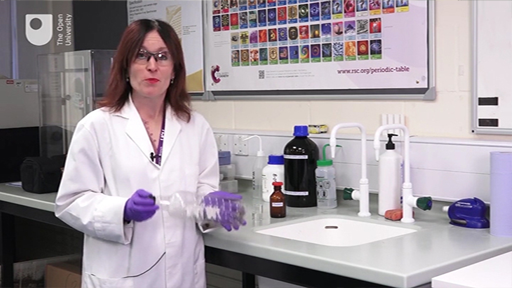2.2.1 Burning of ethanol
When you burn – or combust – ethanol (C2H5OH) in air (which contains oxygen, O2), the final products obtained are carbon dioxide gas (CO2) and water (H2O). Looking at this reaction is important as it produces the same products as does the metabolism of ethanol in the liver, which you will look at in Week 5 of this course.
Now try to produce a balanced equation for the combustion of ethanol:
Start by writing out the reactants and the products.
The reactants and products are:
Now compare the number of carbon atoms in the reactants and products, and start to balance the equation.
The two carbons of ethanol must make two molecules of carbon dioxide:
Now balance the hydrogens in the equation.
The six hydrogens of ethanol must produce three molecules of water (as every molecule of water contains two hydrogens):
Finally, consider the oxygens. What do you have to do to balance them in the equation?
There are now seven oxygens on the right-hand side and so three molecules of oxygen are needed on the left – you now have a fully balanced equation:
Notice that if you chose to start with oxygen then the oxygens already balance; but it is important that you still go on to balance each of the other elements until all are balanced. There are no fixed rules for which atom to balance first, and sometimes a trial and error approach is needed. It is important to remember that, since atoms cannot be created or destroyed, an equation, if it shows a feasible process, can always be made to balance. An arrow or an equals (=) sign can be used to denote a completely balanced reaction. You will see either used, although the most common convention is to use an equals sign when the equation is completely balanced, and arrows in the previous steps of ‘working out’. In the following video, Louise MacBrayne demonstrates the combustion of ethanol. Despite burning ‘slow’ a great deal of heat is generated or, put another way, the reaction releases a lot of energy. In fact there is so much energy released that an ethanol rocket can be manufactured using an empty plastic soda bottle as illustrated in this video.

Transcript
[CRASHING SOUNDS]
Burning ethanol in air happens in one fast high-temperature reaction as seen here. In contrast the liver does the same overall process in three low-temperature stages. This will be explored in Week 5, discussing how much energy is generated and comparing the result with other foods and fuels.
